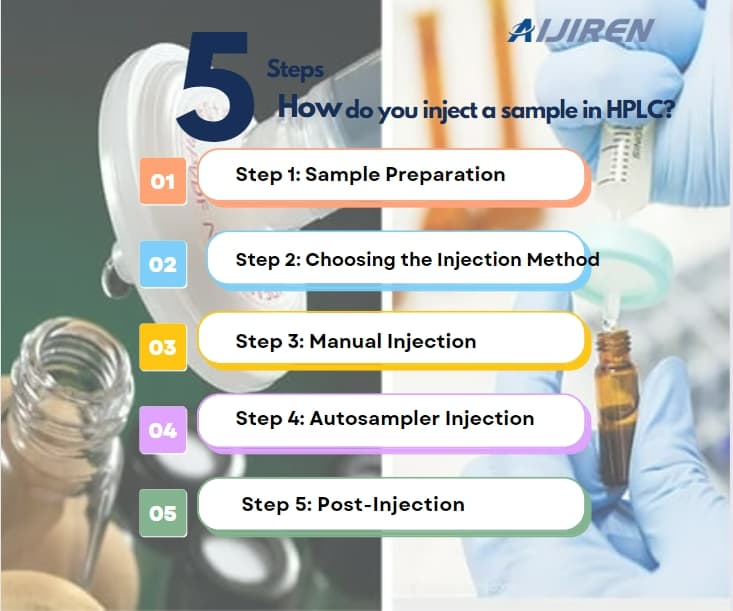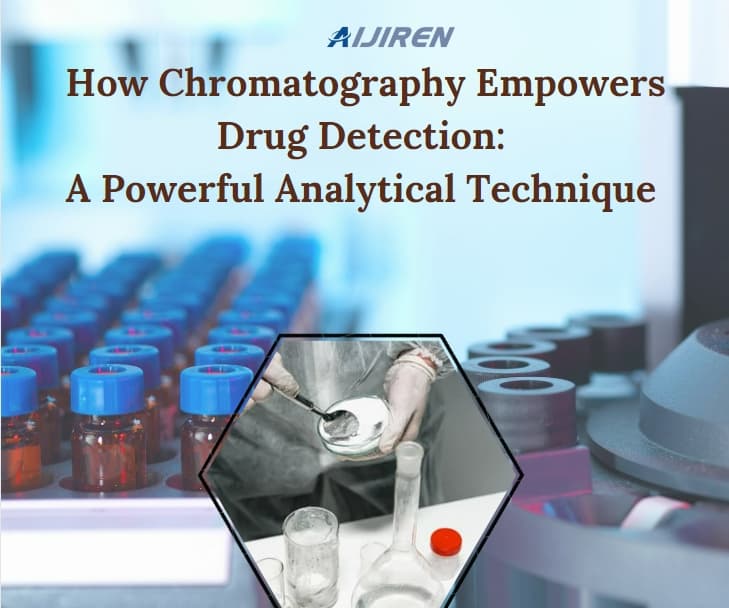One of the “Three Key Points” for HPLC Instrument Operation: Filtration(2)
Any particulate matter entering the HPLC system will be blocked by the sieve plate at the inlet end of the column. The final result will be blockage of the column, which is characterized by increased system pressure and deformation of the chromatographic peaks. Therefore, various preventive measures should be taken, including operating procedures and various filtration designs of commercial instruments themselves, in an effort to prevent or reduce particulate matter from entering the HPLC system, thereby extending the service life of the instrument and chromatographic column, and improving the reliability of data. In HPLC systems, there are three main sources of particulate matter: the mobile phase, the sample being measured, and wear and tear of instrument system components.
1. Mobile phase
3. Wear items of instrument system components
Finally, another major source of particulate matter in HPLC systems is wear of the infusion pump seals and injection valve rotating shafts. There are two different recommendations for replacing worn infusion pump seals.
One suggestion is that in general laboratories, infusion pump seals usually have a service life of six months to one year, so it is recommended to replace these seals every six months or one year. The laboratory should develop a regular preventive maintenance plan based on the above point of view. This view is that compared with the cost of replacing the column with a new one due to the infusion pump seal particles clogging the column, the cost of replacing the seal is lower. Some infusion pumps have glass sand cores or screens that can filter out particles from the pump seal wear in the flow path and prevent these particles from flowing to the column head with the mobile phase. If you have such a device, consult the infusion pump operator’s manual to see the recommended intervals for cleaning or replacement of this filter.
Another suggestion is that the original sealing gasket has the best sealing effect, and it is easy to cause mobile phase leakage after replacement. Therefore, do not replace the gasket easily as long as there is no leakage.
Both statements have their merits. For specific instructions on how to operate, it is recommended to communicate with the engineers of the instrument company. The instruments of each company are still somewhat different.
Autosampler spindle seals also wear out over time, but in my experience even heavy duty spindle seals can last a few years. If your autosampler system has a function that counts the number of injection valve turns, you can set an alarm to alert you when a preset number of valve turns has been reached. It has been said that the injector can rotate up to 20,000 times, which is only for 10,000 injections; but this does not seem to be the normal sample analysis life involved in the laboratory, and their actual service life will be longer. The rotating shaft seal will leak after being worn. The most obvious feature is that after multiple injections of the same sample, the peak area value has a relatively large difference (RSD>5%). Of course, wear of the seals of the infusion pump and the rotating shaft will add more abrasives to the mobile phase, accelerating damage to these components.
Additionally, if the mobile phase you run daily has a buffer salt, such as phosphate buffer, the seals will wear out faster. Regardless of the source of the particulate matter, it must be removed during the experiment. It is recommended that a 0.45 or 0.5 µm in-line porous filter be used in HPLC systems between the autosampler and the column, even if a guard column is used. This online filter will become a baffle instead of a column head filter plate, and if a glass sand core filter plate is used, it is cheap, easy to replace (can be replaced in a few minutes). If online filtration is used, the HPLC system records the pressure value before starting to test each batch of samples. When the pressure rises by a certain value, such as 25% or 500 psi, the glass sand filter plate should be replaced. After replacement, flush the system for a few minutes and the system will return to its original state. pressure value.
Back to List
-
 下午2:56How do you inject a sample in HPLC?
下午2:56How do you inject a sample in HPLC? -
 上午9:04How Chromatography Empowers Drug Detection: A Powerful Analytical Technique
上午9:04How Chromatography Empowers Drug Detection: A Powerful Analytical Technique -
 下午5:01Navigating Micro Inserts for HPLC Vials: A Comprehensive Guide
下午5:01Navigating Micro Inserts for HPLC Vials: A Comprehensive Guide -
.jpg) 下午5:14Common faults and solutions of automatic samplers(1)
下午5:14Common faults and solutions of automatic samplers(1) -
 下午5:08Ensuring Sample Integrity: Navigating EPA Storage Vials Stability Guidelines
下午5:08Ensuring Sample Integrity: Navigating EPA Storage Vials Stability Guidelines

